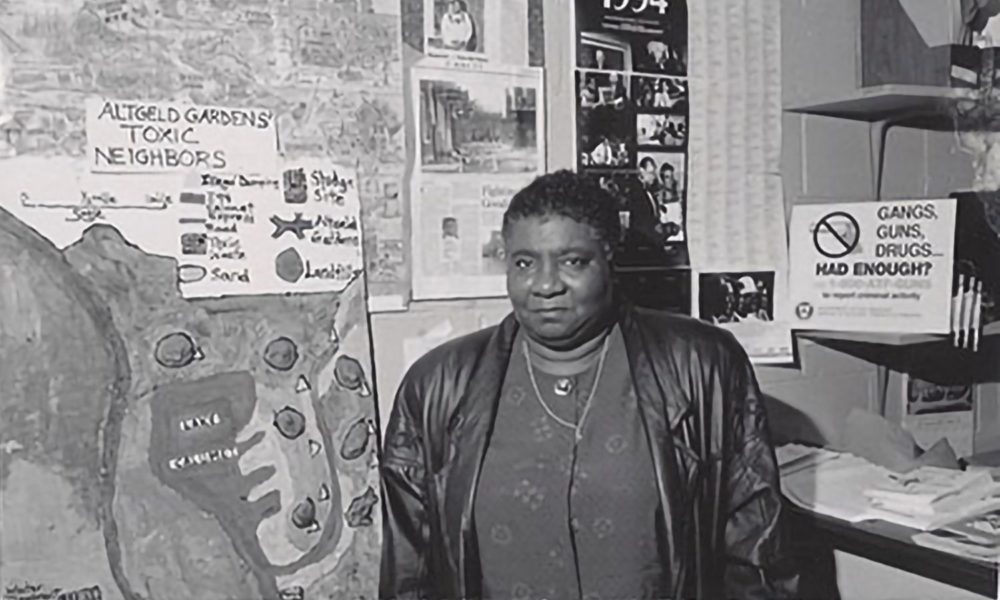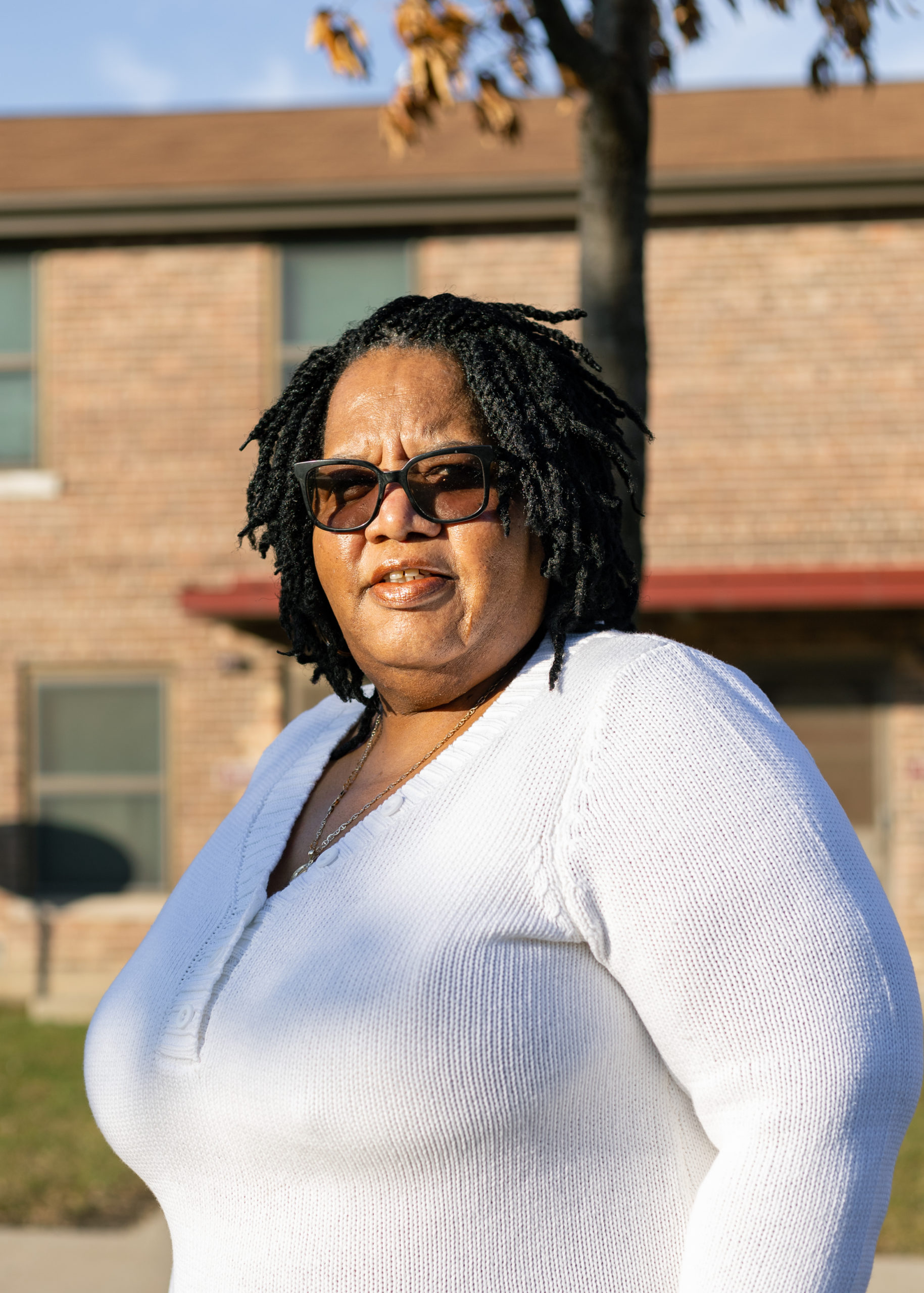Hazel Johnson was not only my mother, she was the mother of the environmental justice (EJ) movement.
Hazel started organizing in our neighborhood, Altgeld Gardens, on the far southside of Chicago in the late 1970s. At the time, Altgeld residents and other Black, Brown and working class neighborhoods across the country were bearing the burden of toxic pollution and industrial dumping. But such terms as environmental justice and environmental racism were not commonplace back then like they are today. My mom dedicated her life to changing that. She fought for justice in Chicago and raised national awareness about the connections between socioeconomic, public health, and environmental inequities in low-income and communities of color—what we now call environmental racism.
For many reasons, women often do not receive the same recognition for their contributions to social movements as men. Those of us fighting the climate crisis on the front lines—working every day to dismantle the structural racism that got us here—know that we stand on the shoulders of giants. Hazel Johnson, one of the many women trailblazers in our movement, was one of them. At the same time my mother was working to address pollution and housing discrimination in Chicago, community environmental justice struggles were erupting in such places as Warren County, North Carolina, and the section of Louisiana now called Cancer Alley, where my mom was born. Those fights also were led mainly by Black women, who—like the civil rights organizers before them—often went unrecognized compared to their male peers.
My mom, like many other women, got started in the work simply because she cared about her community. She and my father John moved to Altgeld Gardens in Chicago in 1962, but their idyllic life took a turn in 1969 when John was diagnosed with lung cancer. He died weeks later at just 41 years old. Hazel later heard from neighbors about others experiencing cancer and respiratory diseases, such as asthma, and about mothers in the neighborhood with high rates of miscarriages or delivering babies with birth defects. She then discovered that her community had the area’s highest cancer rates and began investigating local environmental conditions.
Armed with knowledge of environmentally related health issues and determined to act, she shifted her focus to address the environmental hazards surrounding her community, which she named “the toxic donut.” In 1982, the organization she founded—which I now run—People For Community Recovery, officially incorporated as a not-for-profit organization and waged the environmental justice war on multiple fronts. A decade later, in 1991, Hazel spoke powerfully about her community’s struggle with environmental racism at the first National People of Color Environmental Leadership summit in Washington, D.C. There, she helped create the 17 Principles of Environmental Justice, a guidepost still in use today. And in 1994, Hazel was even invited to the White House to witness President Clinton sign Executive Order 12898: Federal Actions to Address Environmental Justice in Minority Populations and Low-Income Populations.
Hazel passed away in 2011, but her work continues today—and a lot has changed since my mom’s first picket line five decades ago. The widespread recognition that the climate crisis is also a crisis of justice and equity is a huge step in the right direction. But we still have a long way to go when it comes to ensuring that all people have a safe and healthy place to live, regardless of their racial, ethnic or socioeconomic background. As we reflect on how far we’ve come this February during Black History Month, I hope we can learn more about the unsung heroes that got us here and draw inspiration to sustain the future of the movement.
What might have been unimaginable to Hazel 40 years ago is apparent to us in the work today: The federal government and large philanthropies have publicly committed to environmental justice and are investing in remedying it. But our work to make real change has presented new hurdles. Many environmental justice programs still fail to incorporate environmental justice values. And funding for front-line campaigns often trickles down through multiple agencies or organizations before it reaches the community groups leading the work on the ground and winning change, often with the fewest resources and the least recognition.
My mother finally has the opportunity to be recognized for her contributions to the EJ movement. Illinois Congressman Bobby Rush has introduced three federal bills that would honor her legacy: H.Res. 79, which calls for commemorating the month of April every year as Hazel M. Johnson Environmental Justice Month; H.R. 673, which would put my mother’s image on a memorial postage stamp; and H.R. 674, which would posthumously present Hazel Johnson with a Congressional Gold Medal in recognition of her achievements and contributions to the environmental justice movement.
We hope that recognizing Hazel Johnson and other women who played a critical role in protecting their communities will signal the importance of listening to and taking direction from today’s front-line leaders, especially Black women.
Cheryl Johnson, the executive director of People For Community Recovery (PCR), learned the fundamentals of community organizing from her mother, PCR founder Hazel Johnson, and carries on PCR’s mission to enhance the quality of life of residents in communities affected by pollution. A lifelong resident of Altgeld Gardens public housing community on Chicago’s far southside, Cheryl has played an integral role at PCR since 1987 and became executive director in 2011.
You can tell Congress to pass the three bills recognizing Hazel Johnson by clicking here.

